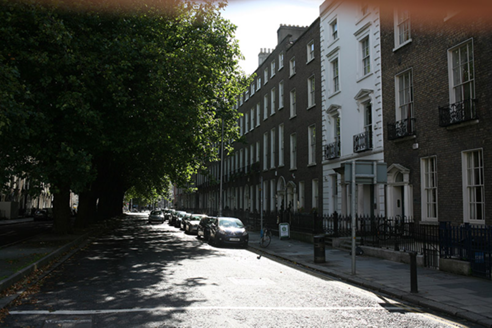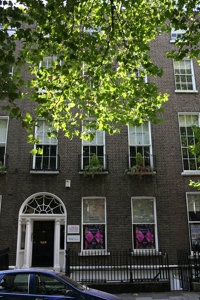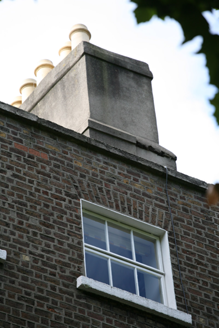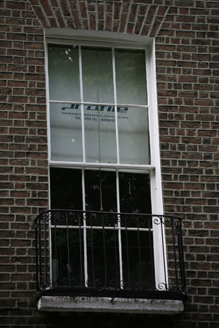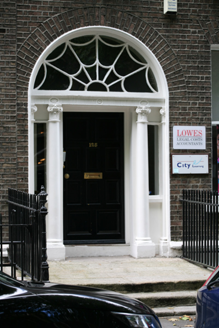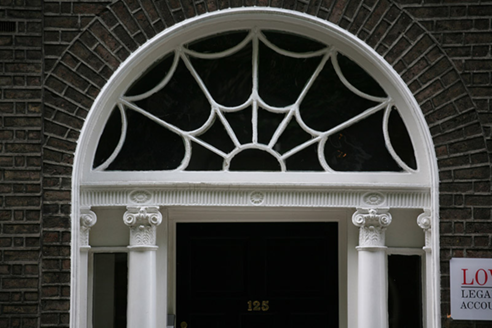Survey Data
Reg No
50930045
Rating
Regional
Categories of Special Interest
Architectural, Artistic
Original Use
House
In Use As
Office
Date
1790 - 1810
Coordinates
316569, 233288
Date Recorded
09/09/2015
Date Updated
--/--/--
Description
Terraced three-bay four-storey over basement former townhouse, built c. 1800, with flat-roofed two-storey over basement return to south. Now in use as offices. M-profile pitched slate roof, hipped to the east and set behind parapet wall with granite coping. Large shouldered rendered chimneystack to the west party wall with lipped clay pots. Buff brick walls laid in Flemish bond with cement strap pointing, painted masonry water-table course over painted rendered basement walls. Cement rendered walls to rear (south) elevation. Gauged brick square-headed window openings, painted masonry sills, painted feathered reveals and timber sash windows. Original six-over-six pane to first, second and basement floors, replacement top-hung timber casement windows to the third floor and mid-to-late nineteenth-century one-over-one to the ground floor. Replacement steel balconettes to the first floor and steel grilles affixed to basement. Largely original multi-pane timber sash windows to the rear elevation. Gauged brick round-headed door opening with masonry Ionic doorcase comprising square-headed door opening flanked by engaged Ionic columns, fixed side lights, Ionic pilasters all supporting fluted lintel cornice and surmounted by original webbed fanlight and replacement timber panelled door. Door opens onto granite paved platform and granite steps to the street enclosed by original wrought- and cast-iron railings set on granite plinth wall and returning to enclose basement well. Replacement steel steps provide access to basement with glazed timber door below platform. Fronting onto the south side of Baggot Street Lower.
Appraisal
A substantial former townhouse retaining a wealth of historic fabric including a handsome doorcase and some original windows. Located in the heart of the south Georgian core, it retains its original external appearance and greatly contributes to the historic character of the streetscape.
